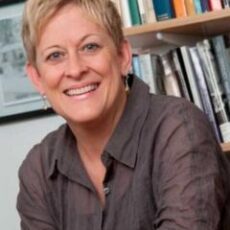
H. Luke Shaefer
Faculty Director
734-615-5997Kathryn J. Edin, H. Luke Shaefer and Timothy J. Nelson
A sweeping and surprising new understanding of extreme poverty in America from the authors of the acclaimed $2.00 a Day: Living on Almost Nothing in America.
Three of the nation’s top scholars – known for tackling key mysteries about poverty in America – turn their attention from the country’s poorest people to its poorest places. Based on a fresh, data-driven approach, they discover that America’s most disadvantaged communities are not the big cities that get the most notice. Instead, nearly all are rural. Little if any attention has been paid to these places or to the people who make their lives there.
This revelation set in motion a five-year journey across Appalachia, the Cotton and Tobacco Belts of the Deep South, and South Texas. Immersing themselves in these communities, pouring over centuries of local history, attending parades and festivals, the authors trace the legacies of the deepest poverty in America—including inequalities shaping people’s health, livelihoods, and upward social mobility for families. Wrung dry by powerful forces and corrupt government officials, the “internal colonies” in these regions were exploited for their resources and then left to collapse.
The unfolding revelation in The Injustice of Place is not about what sets these places apart, but about what they have in common—a history of raw, intensive resource extraction and human exploitation. This history and its reverberations demand a reckoning and a commitment to wage a new War on Poverty, with the unrelenting focus on our nation’s places of deepest need.
Index of Deep Disadvantage
To understand disadvantage across the U.S., researchers developed an Index of Deep Disadvantage using the same data for both counties and cities, which allows for direct comparison. This index represents a holistic look at disadvantage, using health indicators (life expectancy, low infant birth weight), poverty metrics (rates of poverty and deep poverty), and social mobility data (Opportunity Insights Mobility Metrics).
This measure of disadvantage is complemented by local perspectives that provide a deeper understanding of America’s most vulnerable communities. By painting a vivid portrait of the conditions in the nation’s most disadvantaged communities, the index not only uncovers what factors drive disparities, but it can help pinpoint where policymakers, state and local leaders, and residents can take action to improve health, well-being, and opportunity for all.

Faculty Director
734-615-5997
Princeton University

Princeton University
 Social infrastructure and recent surges in opioid-related deaths amid the pandemic
Social infrastructure and recent surges in opioid-related deaths amid the pandemic
By Karen Otzen Kling
According to the American Medical Association, more than 35 U.S. states have reported an increase in opioid-related deaths since the start of the COVID-19 pandemic. Some addiction experts argue that social isolation resulting from the social distancing guidelines required to slow the spread of the virus may be helping to fuel the surge in opioid overdoses.
 Hometown heroes hold up social safety net in rural Kentucky
Hometown heroes hold up social safety net in rural Kentucky
 Disinvestment in rural Kentucky leaves ‘nothing to do’ but drugs
Disinvestment in rural Kentucky leaves ‘nothing to do’ but drugs
 Murky homeownership status derails flood relief in South Carolina
Murky homeownership status derails flood relief in South Carolina
 Moving the needle on syringe exchanges in Appalachian Kentucky
Moving the needle on syringe exchanges in Appalachian Kentucky
 Flood Recovery out of Reach in Rural South Carolina
Flood Recovery out of Reach in Rural South CarolinaWhat the Best Places in America Have in Common, The Atlantic
In the U.S., geography is fate. A new book on poverty seeks to change that, Los Angeles Times
Injustice of Place: Learning from history, State & Hill
Op-ed: Segregation academies show us the ugly side of vouchers, Daily Beast
Crystal City and the poverty of place, The Source / Texas Public Radio
How poverty in the U.S. is driven by the injustice of place, Spotlight on Poverty
How poverty is a direct result of corruption, Time
How studying place can provide insight on American poverty, Daily Yonder